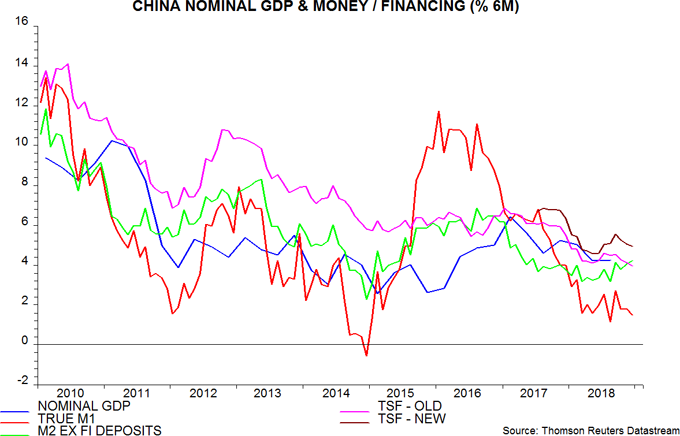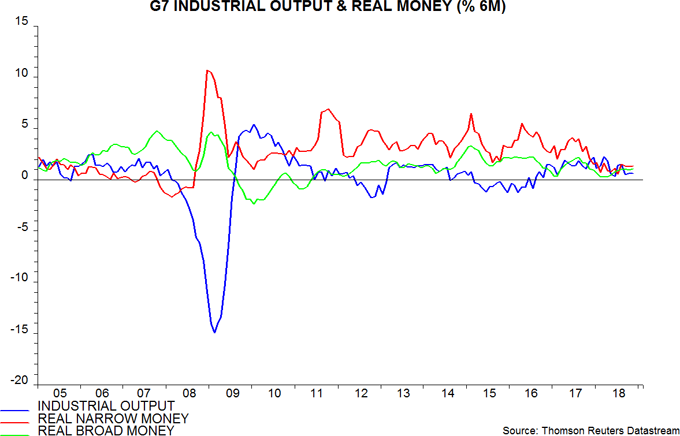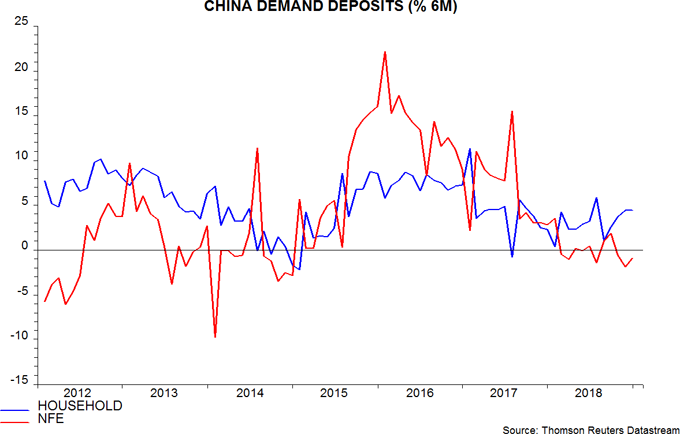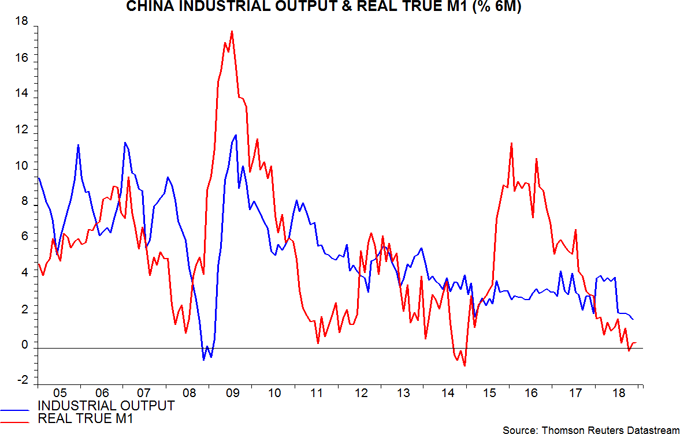
Janus Henderson: Chinese money trends signalling further slowdown
Weak Chinese December money and credit numbers signal that policy easing has yet to translate into an improvement in economic prospects.
18.01.2019 | 13:35 Uhr
The preferred narrow and broad monetary aggregates here are M1 plus household demand deposits – i.e. true M1 – and M2 excluding deposits of financial institutions. Six-month growth of true M1 fell back towards the recent August low – see first chart.
Growth of M2 excluding financial institutions’ deposits rose to an 18-month high, a development some commentators may cite as a hopeful signal. The interpretation here is that broad money is being boosted by the contraction of the shadow banking system and a consequent shift of assets and liabilities onto banks’ balance sheet. The rise in bank deposits, that is, has probably been the counterpart of a larger fall in unrecorded shadow bank liabilities.
If the rise in broad money growth signalled stronger spending and activity, it would be expected to involve an acceleration of demand as well as time deposits, i.e. narrow money growth would also have recovered.
A similar divergence of broad and narrow money trends occurred in G7 economies in late 2007 / early 2008 as shadow banking systems collapsed – second chart. Narrow money correctly signalled coming economic weakness. A contraction in broad money was delayed until 2009-10, when shadow banking stabilised – economic activity was then recovering strongly.
Credit trends are consistent with the negative message from narrow money. Six-month growth of total social financing, which partially includes shadow credit, fell to a new low in December on the historical definition excluding local government special bonds (among other items) – first chart.
Sectoral money trends suggest weaker prospects for business than consumer spending. The six-month change in demand deposits of non-financial enterprises (NFEs) remained negative in December but household growth has recovered recently, possibly partly reflecting the impact of actual and scheduled tax cuts – third chart.
Real as well as nominal money trends are weak. Six-month growth of true M1 deflated by consumer prices reached a low in October, barely recovering in November / December – fourth chart. Allowing for a typical nine-month lead, this suggests a further slide in economic momentum into the third quarter.
Policy easing has accelerated in December / January. January money numbers will be make-or-break for hopes of a second-half economic rebound.








Diesen Beitrag teilen: